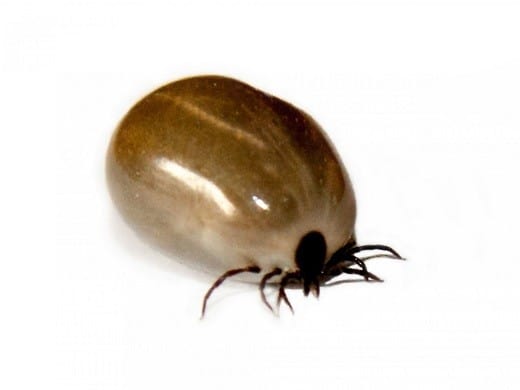
 Call it global warming, call it an aberration. Whatever you call it, the eight-legged evidence has arrived for summer tick season.
Call it global warming, call it an aberration. Whatever you call it, the eight-legged evidence has arrived for summer tick season.
Across Canada, owing to the mild winter most of the country enjoyed, people are dealing with an increasing threat borne from a creature just ten millimetres long.
Ticks, those tiny arachnids that can cause a whole host of nasty illnesses including Lyme disease, have come to Canada’s early summer part early and without an invitation. They first began to show up in Alberta, where in March parasitology expert Daniel Fitzgerald noted that twice the usual number of the pests had been spotted in places like Red Deer and Lethbridge.
“Because the winter started later, they had more time to get ready for winter,” Fitzgerald who is with the Alberta Department of Agriculture and Forestry told the CBC. “And because the winter didn’t get really cold and kill the ticks hiding in the grass, they’re more ready to wake up in the springtime and go out and get a meal.”
A month later, in Ottawa, veterinarian Kevin McIntosh noticed an uptick (sorry, couldn’t resist) in the number of dogs he was treating for ticks.
“To already be pulling ticks off in early April is just incredible,” he said. “I see this being an incredibly active year for ticks, especially because we’ve seen so much already of the lyme that we’re diagnosing by our blood tests.”
In some parts of Canada, ticks are emerging where people haven’t seen them before. In Whistler this week, Dr. David Patrick, director of the University of British Columbia’s School of Population and Public Health talked about a young girl who had indicators of Lyme disease after collecting garbage in some bushes.
“I think any time you brush up against the undergrowth think about protection in advance, or at least check yourself when you get back,” Patrick said. “Maybe there are fewer in Whistler than Squamish and Pemberton, but I don’t know that. No one has ever done a survey.”
The real fear that arrives with tick season, of course, is Lyme Disease. Named for its discovery in the town of Lyme, Connecticut in the 1970s, Lyme Disease is notoriously hard to diagnose and left untreated can cause serious damage to the nervous system, liver, heart or joints. Early stage Lyme disease can be treated with antibiotics, but there is no vaccine against it.
Experts say the best way to avoid contracting Lyme disease from a tick is to wear closed-toe shoes, use an insect repellent with DEET, and avoid thick brush and grass. One advantage is that ticks can take a long time to begin feeding after attaching themselves to a human host, and so a scan for them after coming in from the outdoors can often prevent a world of hurt.
“It takes 12 to 24 hours of a tick feeding for transmission to happen,” says Wayne Knee, a scientist at the Canadian National Collection of Insects, Arachnids and Nematodes at Agriculture Canada, who recommends that you use tweezers to remove a tick if you find one instead of trying to use chemicals to try and kill it because they usually “too tough” for them.
Leave a Reply
You must be logged in to post a comment.




 Share
Share Tweet
Tweet Share
Share




Comment